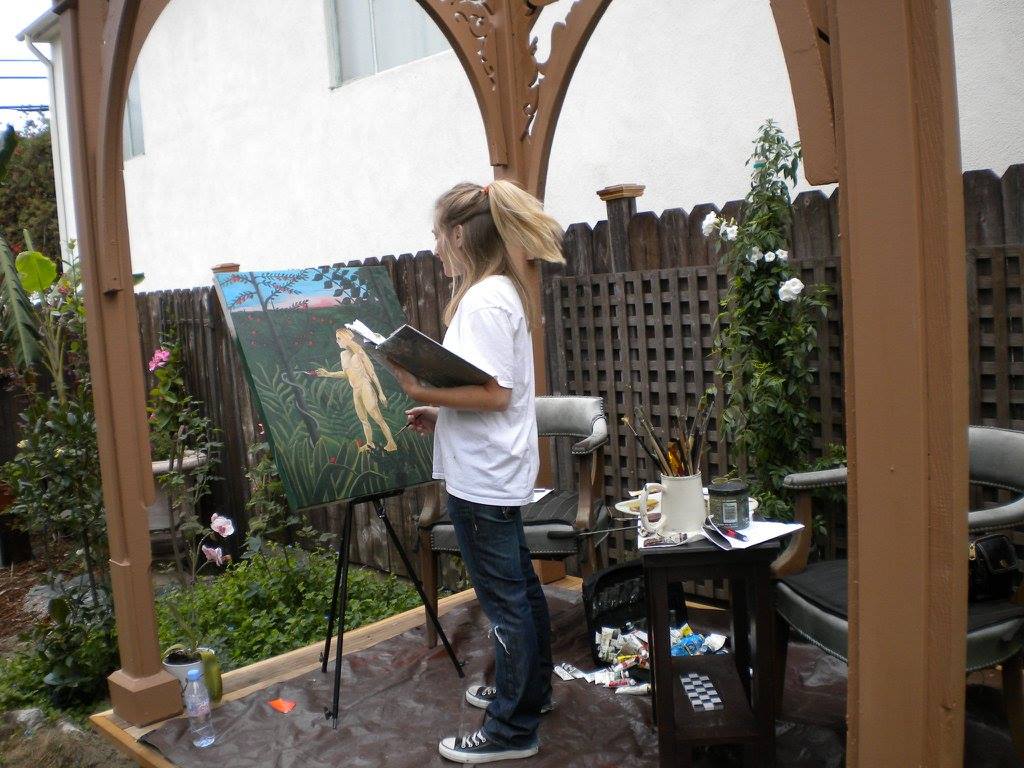There are different schools of thought in teaching art to children. One is that you put all the supplies out for them and let them make what ever they want in what ever way they want. https://www.artsy.net/article/artsy-editorial-teach-art-kids-mark-rothko. The other is to teach methods and skills. I think you need both. Children are more open minded and experimental than adults, however, due to their limited knowledge of form and technique, they tend to get discouraged or frustrated if their finished work doesn’t end up looking the same way it did in their head–like if they want to make the cat orange but have not learned that they need to mix yellow and red together to create orange, or they want to paint dog fur with a certain texture but have not learned how to create that particular effect.
I have found that the teacher may have to adjust expectations or lesson plan mid lesson. I had originally set up a still life of a bowl of oranges but they were not interested in painting them. I printed out a few pictures of flowers, kittens and puppies that they much preferred and they each chose a different picture. We discussed how to gauge the size of the animals bodies relative to the head, the angles of the flowers petals and how the sky didn’t have to be blue. I demonstrated layering of colors, wet into wet techniques and how to deal with edges (let them blend or keep them separate).
I was lucky enough to teach these three students above ages 5-9. They had ideas of what they wanted to paint but upon instruction began to think of how they could translate them using water colors. By the end of a three hour class (with a few breaks for snacks) , their visions had transformed to vibrant artwork.




